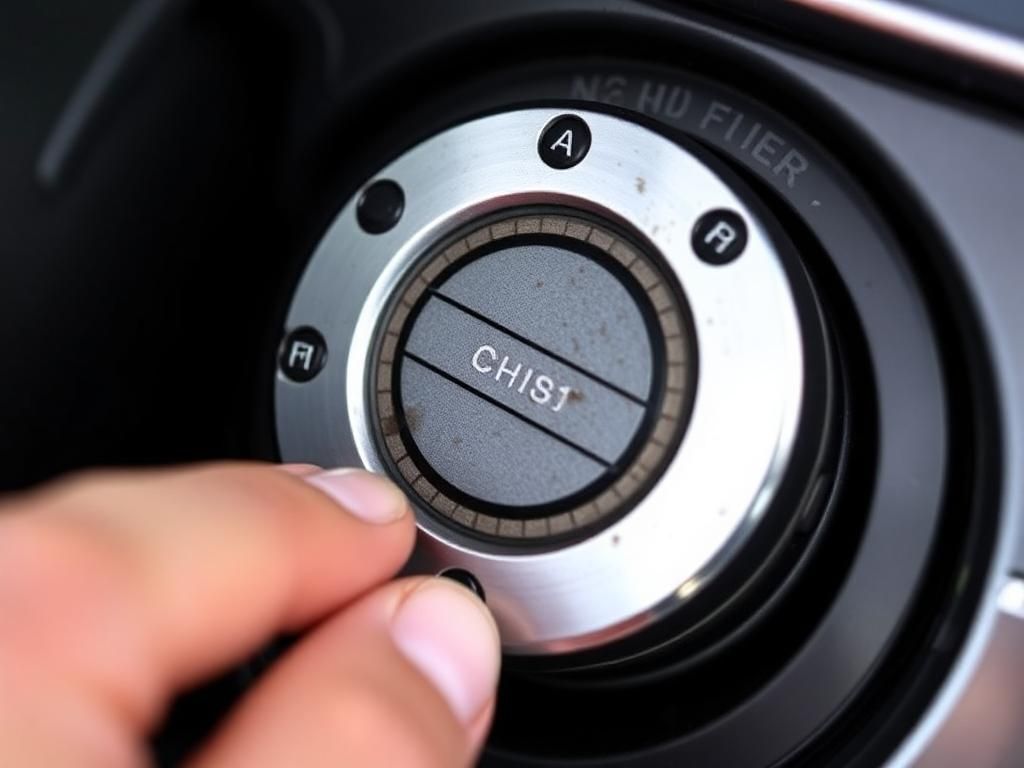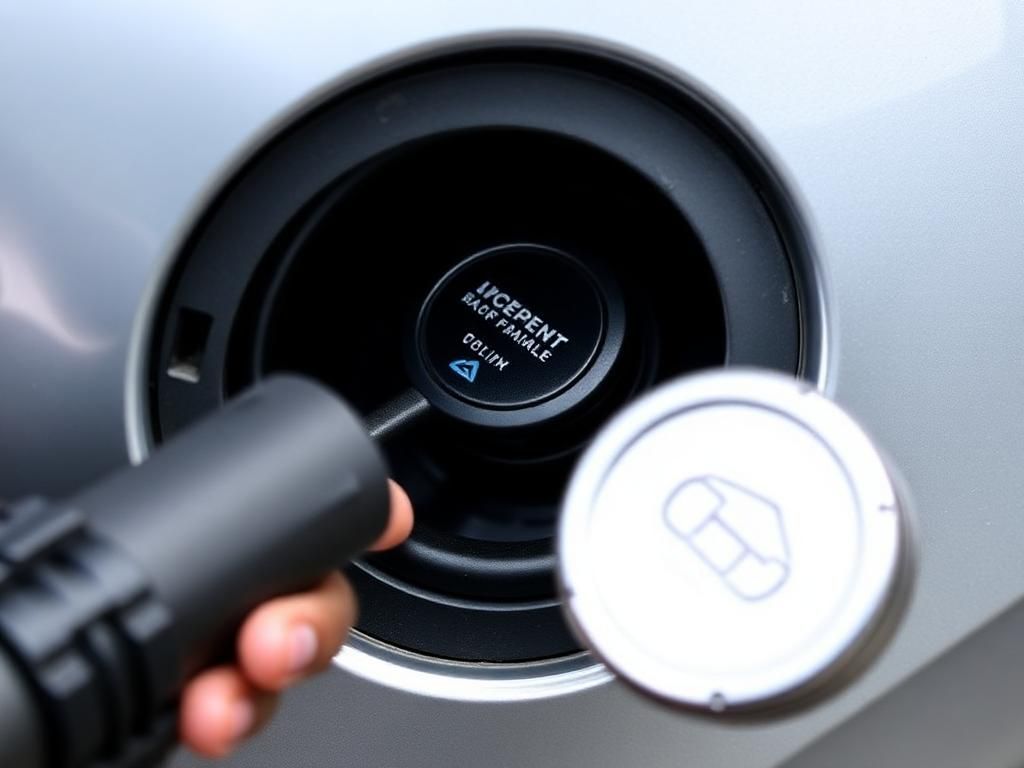The fuel cap is a small, often overlooked component of a vehicle, yet it plays a significant role in maintaining the vehicle’s overall performance and efficiency. A properly functioning fuel cap keeps the fuel system sealed, preventing fuel evaporation and ensuring that the engine operates at optimal pressure. Understanding the importance of your fuel cap is essential for any vehicle owner, as it can impact emissions, fuel efficiency, and even the longevity of your engine. This article will cover everything you need to know about how to check fuel cap, its significance, symptoms of a faulty cap, maintenance tips, and the latest technological advancements in fuel cap designs.
Understanding the Fuel Cap
What is a Fuel Cap?
A fuel cap, also known as a gas cap, is a cover that seals the fuel filler neck of a vehicle’s fuel tank. Its primary purpose is to prevent fuel from spilling out and to keep contaminants out of the fuel system. There are different types of fuel caps that serve varying purposes:
– **Standard Caps:** These caps are commonly found in most vehicles and have a simple twist-on mechanism.
– **Locking Caps:** Designed to deter fuel theft, these caps require a key or combination to remove.
– **Venting vs. Non-Venting Caps:** Venting caps allow air to enter the fuel tank, balancing pressure and preventing vacuum formation, while non-venting caps seal the tank tightly but can lead to pressure issues if not functioning correctly.
Why Fuel Caps Matter
Fuel caps are crucial for several reasons:
– **Prevention of Fuel Evaporation:** A faulty cap can allow vapors to escape, which not only wastes fuel but also contributes to pollution.
– **Maintaining Proper Pressure in the Fuel Tank:** A secure fuel cap helps maintain the right pressure, leading to enhanced vehicle performance.
– **Environmental Regulations and Fuel Emissions Control:** Fuel caps play a vital role in meeting environmental standards by minimizing harmful emissions.
Symptoms of a Faulty Fuel Cap
Warning Signs
Recognizing the symptoms of a malfunctioning fuel cap is the first step in maintaining your vehicle. Here are the common warnings to watch for:
– **Fuel Odor Around the Vehicle:** A noticeable scent of gasoline may indicate a leak due to a damaged fuel cap.
– **Dashboard Warning Lights:** The infamous Check Engine light could be triggered by a loose, damaged, or missing fuel cap. Ignoring this light can lead to more significant issues.
– **Decreased Fuel Efficiency:** If you notice that your vehicle is using more fuel than usual, a faulty fuel cap might be the cause.
– **Frequent Refueling Needs:** An inability to maintain fuel might prompt you to refuel more often than normal.
Consequences of Ignoring Issues
Failing to address a malfunctioning fuel cap can lead to severe consequences, including:
– **Potential Engine Damage:** Prolonged exposure to fuel vapors can harm sensitive parts of the engine.
– **Increased Fuel Costs:** Fuel evaporation translates directly to higher expenses at the pump.
– **Environmental Impact:** Ignoring a faulty fuel cap contributes to air quality issues and violates environmental regulations.
How to Check Your Fuel Cap
Step-by-Step Inspection
It’s essential to know how to check fuel cap effectively. Here’s a simple guide to inspecting your vehicle’s fuel cap:
1. **Visual Inspection:**
– Check for any cracks, warping, or signs of damage.
– Look for dirt and debris around the seal; clean any buildup to ensure a smooth fit.
2. **Tightness Check:**
– Make sure the cap is secure by twisting it clockwise until it clicks.
– To reseat the cap properly, remove it, wipe the seal, and reattach firmly.
Testing the Fuel Cap Seal
For a more thorough examination:

– **Using a Pressure Test Kit:** This kit can evaluate the integrity of the seal.
– **Alternative Methods:** If you don’t have a testing kit available, perform a soapy water test. Mix soap with water, apply it around the cap, and look for bubbling, which indicates leaks.
Maintaining Your Fuel Cap
Regular Inspections
To ensure your fuel cap remains in working order:
– **Frequency Recommendations:** Inspect your fuel cap every few months, particularly during vehicle service.
– **Signs It’s Time to Replace:** Cracks, broken seals, or difficulty in securing the cap indicate a need for replacement.
Cleaning the Fuel Cap
A clean fuel cap helps maintain a tight seal:
– **Guidelines:**
– Use safe cleaning materials like warm, soapy water.
– Avoid using cleaners that may damage the rubber seal or cause corrosion.
When to Replace Your Fuel Cap
Knowing when to replace your fuel cap is crucial for vehicle maintenance:
– **Identifying Wear and Tear:** Check regularly for signs of damage or degradation.
– **Choosing the Right Replacement:** Decide between OEM and aftermarket options based on quality and cost considerations.
Fuel Cap Troubleshooting
Diagnosing Common Problems
If you suspect issues with your fuel cap, consider these common scenarios:
– **Loose Fuel Cap Scenarios:** Make sure it’s tightened fully, and if the warning light persists, further inspection is warranted.
– **Signs of a Defective Fuel Cap:** Look for fuel odors or leaks around the cap area.
– **When to Seek Professional Help:** If you’re unable to resolve the issue yourself, visit a mechanic for a comprehensive diagnosis.
Resolving Fuel Cap Issues
Here are some solutions you can consider:
– **Temporary Solutions When Traveling:** If you lose your fuel cap, cover the opening with plastic wrap or a cloth to minimize pressure loss until you can replace it.
– **Long-Term Fixes:** Always have a spare fuel cap handy, especially during long road trips.
Impact of Technology on Fuel Caps
Evolution of Fuel Cap Designs

Advancements in technology have led to improved fuel cap designs, enhancing both security and functionality:
– **Innovations in Materials and Locking Mechanisms:** Modern caps are often made from durable plastics and designed to lock securely.
– **Smart Technology Integration:** Some new vehicles utilize sensors to indicate when the fuel cap is loose, enhancing user awareness.
Future Trends
Looking ahead, the evolution of fuel caps will likely focus on sustainability:
– **Environmental Impact Considerations:** Future designs may prioritize eco-friendly materials.
– **Connection to Overall Vehicle Efficiency Advancements:** As vehicles become more efficient, fuel caps will play a pivotal role.
Conclusion
Maintaining a properly functioning fuel cap is crucial for the overall health of your vehicle. Regular checks, timely replacements, and being aware of potential issues can prevent more extensive damage and improve fuel efficiency. Prioritize vehicle maintenance and ensure your fuel cap remains in top condition.
Additional Resources
For further reading and resources, consider checking out:
– [Car Maintenance Guide](https://www.edmunds.com/car-maintenance/)
– [Tools for Vehicle Inspections](https://www.hagerty.com/media/maintenance-tools-for-your-vehicle/)
Frequently Asked Questions (FAQs)
1. How do I know if my fuel cap is faulty?
If you notice fuel odors, warning lights on your dashboard, or decreased fuel efficiency, it may indicate a faulty fuel cap.
2. Can a bad fuel cap cause my Check Engine light to turn on?
Yes, a loose or damaged fuel cap is one of the common triggers for the Check Engine light.
3. How often should I check my fuel cap?
It’s advisable to check your fuel cap every few months or during routine vehicle maintenance.
4. What are the consequences of driving with a damaged fuel cap?
Driving with a damaged fuel cap can lead to increased fuel consumption, engine damage, and environmental pollution.
5. Are there any specific cleaning products I should avoid for my fuel cap?
Avoid harsh chemicals and solvents that can damage the rubber seals.
6. How do I perform a pressure test on my fuel cap?
Using a pressure test kit, you can measure the pressure in the fuel tank to ensure it’s sealed properly. Alternatively, a soapy water leak test can also work.
7. Where can I buy a replacement fuel cap?
Most auto parts stores, dealerships, and online retailers offer replacement fuel caps.
8. What’s the difference between OEM and aftermarket fuel caps?
OEM caps are made by the original manufacturer and often offer a guaranteed fit, while aftermarket caps may be cheaper but vary in quality.
9. Will a fuel cap affect my car’s performance?
Absolutely, a faulty cap can lead to pressure imbalances in the fuel system, impacting engine performance.
10. Can I drive without a fuel cap temporarily?
It’s not recommended to drive without a fuel cap, as it can lead to fuel evaporation and contamination issues. If lost, cover the opening temporarily until you can replace it.
| Issue | Symptoms | Solutions |
|---|---|---|
| Loose Cap | Check Engine light, fuel smell | Tighten or replace cap |
| Cracked Cap | Fuel leakage, odor | Replace immediately |
| Dirty Seal | Frequent refueling, leaks | Clean seal or replace cap |
| Defective Closure | Pressure loss, engine performance issues | Check seal integrity or replace cap |